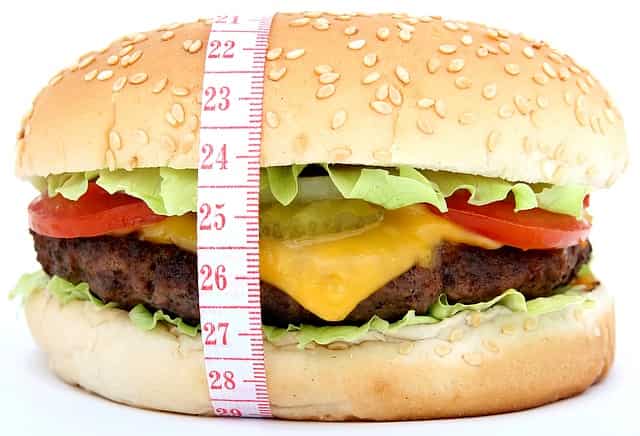Some people mistakenly believe that metabolism is a physical organ or body part that influences digestion. In reality, metabolism is a series of chemical processes that take place in the body to convert food into energy. These processes are essential for our bodies to function and are influenced by a variety of factors, including our diet, age, and activity level.
Actually, the metabolism is a process that takes place in the entire body.
Metabolism is the process of transforming food (e.g. nutrients) into energy (fuel) that the body can use for a variety of essential functions. Through this process, the body is able to convert nutrients into energy, allowing it to perform its many vital processes.
Your metabolism is the rate at which your body burns calories. The more calories you burn, the more energy you have, and the better your chances of staying slim.
Without a metabolic process, you would be unable to perform any physical activity as your body wouldn’t have the necessary energy to do so. Metabolism is an essential process for sustaining life and enabling us to move and be active.
Before you were even aware of it, your metabolism had already ceased functioning when you died. In fact, the moment of your death marks the point at which all cellular metabolic processes come to an abrupt halt. As soon as this happens, your cells no longer produce energy or carry out any other metabolic activities. This means that your body can no longer maintain its normal functioning, and eventually it will start to break down.
The process of converting food into energy is known as metabolism. The energy that is produced by metabolism is used to carry out all of the body’s basic functions, including breathing, heartbeat, and muscle movement. The different organs in the body use different types of energy, and the body’s muscles use the most energy.
Metabolism is controlled by the brain and is divided into two main categories: anabolic (building) and catabolic (breaking down) processes. The anabolic process is responsible for the growth and repair of tissues, while the catabolic process is responsible for the breakdown of tissues and the release of energy.
Metabolism is a very important process, and it’s essential for the body to stay healthy. The different parts of the metabolism work together to keep the body functioning properly.
The human metabolism is often viewed as a finely-tuned process, finely balancing two seemingly contradictory bodily functions. By working in harmony, it is able to ensure both vital processes are carried out efficiently, allowing the body to function properly.
Anabolism and Catabolism
Our bodies are constantly regenerating. Whenever we suffer an injury or experience cell death, our bodies create new cells to replace them. A prime example of this is when we get a cut; our bodies immediately start the healing process by clotting the blood and creating new skin cells. This process of renewal is known as anabolism, and is a metabolic response to cell damage.
Alternatively, in other areas of the body, the exact opposite activity is occurring. Instead of constructing cells and tissue, the body is breaking down energy for its own functioning.
When you exercise, your body releases endorphins, which are hormones that have pain-relieving and euphoric effects. In addition, when you exercise, your body releases cortisol, which helps to increase the production of glucose. All of these things work together to give you the energy you need to continue exercising.
Your body will start to convert food into energy in a metabolic process called catabolism. This process is what helps your body to expend energy and provide you with the nutrients you need to function.
Your metabolism is a constantly occurring process that uses energy to create and break down cells.
The metabolism is a harmonizer. It brings together two seemingly opposite functions, and does so in a way that enables the body to create cells as needed, and break them down, again as needed.
Metabolism and Weight Loss
Calories
Calories are simply units of measure used to quantify the amount of energy contained in food. Like an inch, they are labels that measure the energy contained in the food we eat, rather than being actual physical things. Calories measure the amount of energy in food.
Your body can create energy from the food you eat, regardless of its nutritional value. While it’s best to fuel your body with healthy fruits and vegetables, the same process of breaking down carbohydrates, proteins, and fats is used to create energy from unhealthy snacks like chocolate bars and candy.
While it’s widely known that fresh fruits and vegetables are the best source of energy for your body, it’s important to remember that your body will create energy from whatever you provide it. It does not discriminate between healthy and unhealthy foods.
The body is really good at getting rid of toxins, but it can also get rid of healthy things, too. So if you’re trying to lose weight, you need to be careful what you eat. If you eat a lot of junk food, your body will store the calories as fat. But if you eat healthy foods, your body will use the energy to do things like heal wounds or make new cells.
When the body receives more than it can use, it stores the surplus as fat. The body does this by converting the excess calories into glucose and storing it in the liver and muscles.
The body utilizes energy from food sources through two primary metabolic processes: anabolism and catabolism. Anabolism is the process of converting energy into cells and tissues, while catabolism is the process of breaking down cells and utilizing the energy for bodily functions. In both processes, the energy from food (in the form of calories) is either stored or utilized.
This happens when you are in a state of high alert, such as when you are in a fight or flight response. When this happens, your body will create cells to store energy until you can use it.
The body doesn’t always want to, but after determining that the energy can’t be used for any practical purpose (like aiding with physical activity or digestion), it must resort to anabolism to convert it into cells.
Adding extra cells to your workout routine can actually lead to weight gain. This is because muscle is more metabolically active than fat, so adding more muscle can lead to an increase in calorie burn. However, if you’re already overweight or obese, adding muscle could lead to even more weight gain. So if you’re considering adding extra cells to your workout routine, make sure you’re doing it safely and responsibly.
In a nutshell, the body’s metabolism is all about energy balance. When there is an excess of calories, the body will store them as fat. To maintain a healthy weight, it is important to ensure that energy intake is balanced with energy expenditure.
Sometimes those extra calories are transformed into muscle, allowing your body to become stronger and leaner. In addition, muscles require calories to maintain their mass, meaning that people with strong muscle tone can actually burn calories without exercising. This is due to their increased metabolism, which helps them to continuously burn calories even when at rest.
Exercising and building lean muscle is an essential part of any weight loss program because it helps to boost your metabolism. Having more lean muscle mass increases the number of calories your body can burn before they are converted into fat. This means that you can eat more food, without having to worry about gaining weight.
Fat
It’s a common misconception that fat cells are permanent and can’t be reduced. However, the reality is that while fat cells may be permanent, their size and appearance can be changed. Through regular exercise and a balanced diet, it is possible to shrink fat cells and reduce your overall body weight. So even though you may have the same number of fat cells, it is possible to reduce their size and appearance, leading to a healthier and happier lifestyle.



 Diet and Metabolism
Diet and Metabolism Protein Rich Vegan Recipes
Protein Rich Vegan Recipes Protein – Meat vs. Plant
Protein – Meat vs. Plant Correct Proteins For Weight Loss
Correct Proteins For Weight Loss Food Pyramid
Food Pyramid